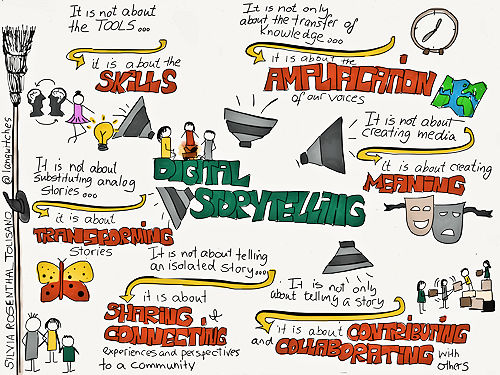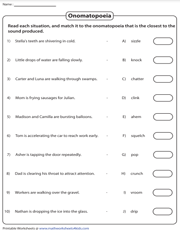In today’s fast-paced educational landscape, the shift towards dynamic teaching methodologies is more crucial than ever. Among various innovative approaches, Project-Based Learning (PBL) stands out, especially within the realm of STEM education. This immersive technique ignites student engagement and fosters real-world problem-solving skills, making learning an exciting adventure. 
Enhancing Engagement Through Active Learning
Utilizing Project-Based Learning in STEM education allows students to delve deep into subjects, transforming passive absorption of information into active participation. This method empowers learners to take ownership of their education, engaging them in hands-on projects that mirror real-world challenges. As students collaborate and innovate, they build valuable skills that will serve them long after their academic journey concludes.
Essential Skills for the Future
The integration of Project-Based Learning into STEM education is vital for cultivating essential skills like critical thinking, collaboration, and communication. These competencies are not only academic; they are crucial for any career path students may choose. The multifaceted nature of PBL equips students to navigate complex problems, work effectively in teams, and articulate their thoughts clearly, laying the groundwork for future success.
Optimal Implementation Timing
There is no singular approach to timing; however, the start of a new semester or academic year can provide a fresh canvas for incorporating PBL. Initiating project-based assignments with a real-world connection can spark interest and provide context. Additionally, regularly scheduled project intervals throughout the school year can reinforce learning, allowing for a deeper understanding of topics as students apply concepts in varied contexts.
Empowerment Through Real-World Applications
Implementing Project-Based Learning within the STEM curriculum offers a plethora of advantages. Students not only learn theoretical concepts but also apply them in practical settings, enhancing retention and understanding. This experiential learning model fosters creativity, flexibility, and responsiveness, enabling students to thrive in rapidly evolving environments and prepare for unforeseen challenges ahead.
Frequently Asked Questions
1. What are the core components of Project-Based Learning?
Core components typically include driving questions, student voice and choice, inquiry and innovation, and reflections during and after the project.
2. How can educators assess PBL effectively?
Assessment can involve formative and summative evaluations through peer reviews, self-assessments, and teacher observations, focusing on the learning process as well as the final product.
3. Can PBL be adapted for different age groups?
Absolutely! PBL can be tailored to fit various age groups by adjusting project complexity and expectations, making it a versatile option for diverse learners.
4. What challenges might educators face when implementing PBL?
Challenges may include time constraints, resources availability, and the need for proper professional development to navigate this instructional approach effectively.
The Benefits of Using Project-Based Learning in STEM Education
This approach primarily targets fostering enthusiastic and self-directed learners. Reflecting on my own experience, I remember a particular project that revolved around designing a sustainable energy solution for our school. The project was not only engaging; it demanded collaboration across disciplines, allowing me to grasp complex scientific concepts while working alongside peers. Through this hands-on learning experience, I developed practical skills that remain beneficial today.
Conclusion of The Benefits of Using Project-Based Learning in STEM Education
The transformative power of Project-Based Learning within STEM education cannot be overstated. By embracing this methodology, educators can cultivate a rich, engaging, and practical learning environment. As students become active participants in their education, they acquire critical life skills, paving the way for a future filled with possibilities. The journey through PBL not only enriches academic knowledge but also ignites a passion for lifelong learning.
If you are looking for Incorporating STEM and STEAM into Project Based Learning With FREEBIE you’ve visit to the right page. We have 8 Pictures about Incorporating STEM and STEAM into Project Based Learning With FREEBIE like 4 Tips to Integrate Project-Based Learning in STEM Curriculum – A Pass, Embracing Project-Based Learning: Unlocking the Potential of Education and also 7 Essential Elements for Project Based Learning – Literacy In Focus. Read more:
Incorporating STEM And STEAM Into Project Based Learning With FREEBIE

www.pinterest.com
stem learning based project steam incorporating into freebie sandycangelosi elementary article pbl
Making STEM Connections Using Project-based Learning

blog.pitsco.com
pbl connections dive units pitsco
Project Based Learning Why How And Examples – Winder Folks

winderfolks.com
Project-Based Learning — Why You Need To Implement It Right Now

ideas.demco.com
pbl kids implement working demco engage
Embracing Project-Based Learning: Unlocking The Potential Of Education
www.linkedin.com
7 Essential Elements For Project Based Learning – Literacy In Focus

litinfocus.com
Project-Based Learning – Babcock Schools

babcockneighborhoodschools.org
4 Tips To Integrate Project-Based Learning In STEM Curriculum – A Pass

apasseducation.com
Project based learning why how and examples – winder folks. Pbl kids implement working demco engage. Embracing project-based learning: unlocking the potential of education




